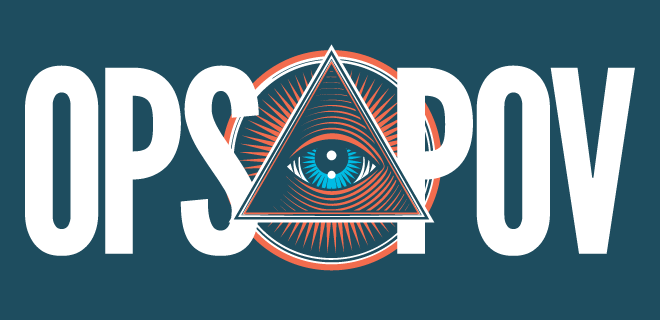
Historically, advertising has played a vital role in funding the free open web but today publishers are facing great challenges. Reputable content is being demonetized based on overly broad content blocking tactics, and publishers are losing money due to opaque or unclear fees.
The advertising ecosystem has a huge opportunity to create a more transparent programmatic supply chain, where SSPs, brands, ad tech vendors, and agencies alike can commit to using new tools and tactics to improve how they work with publishers. By enhancing the control and transparency in the programmatic supply chain, we will ultimately be able to create a better, privacy-centric, seamless user experience.
That’s how Len Ostroff, SVP, Global Supply and Partnerships, Criteo told us he sees things moving forward. And the path ahead—for creating a more transparent, sustainable programmatic supply chain—relies on four major initiatives:
- Futures Buying: Allowing publishers to be paid upfront, providing revenue security critical for driving continued success. While publishers provide access to priority inventory, buyers benefit from flexibility to fund and purchase inventory in advance.
- Contextual Targeting and Blocking: Advertisers are taking aggressive steps to block ads. Instead, how can they adapt the approach and shift strategies for the betterment of the industry? We started with URL blocking, then progressed to keyword blocking (which still lacked key context in many cases), and now we have contextual blocking. Making those types of blocking capabilities accessible is important because it provides the ability to be fluid and give more controls to advertisers.
- Supply-Path Optimization (SPO): How can we leverage this concept to get buyers closer to sales, increase performance, reduce costs and maintain a safe and compliant environment? While reducing cost and cutting down hops is important from an economic angle, a key point is also knowing the origin of the inventory to ensure quality and brand safety. Advertisers benefit from the ability to buy from a source that has direct access to supply.
- Embracing greater flexibility around native formats as advertisers look to shift their dollars away from Facebook to native environments that offer control over the content to which the ads will be adjacent.
Improving Control and Transparency for Publishers in the Programmatic Supply Chain: A Conversation With Len Ostroff, SVP, Global Partnerships and Alliances, Criteo
Lynne d Johnson: How can all sectors of the advertising industry work together to create a more transparent programmatic supply chain?
Len Ostroff: Collaboration across all industry players is going to be crucial to develop privacy-safe solutions for the post-cookie world and improve transparency in the programmatic supply chain. Publishers and advertisers have an opportunity to take a more strategic approach by leveraging their programmatic partners that bring the most value to their supply path.
Publishers should investigate supporting private marketplaces, guaranteed deals, and reducing the number of demand partners to achieve an optimal number of bid requests per impression, while advertisers can commit to guaranteed direct deals with upfront payments to publishers to eliminate opaque supply and unclear fees.
LdJ: How can advertisers commit to new tools and tactics that will help them work with publishers more effectively?
LO: There is so much opportunity to reimagine digital advertising and publishers will play a crucial role in this evolution. Supporting great content creation is crucial to maintain a vibrant and content-rich open internet. Publishers and advertisers have a responsibility to make sure they are creating content that is valuable to users while displaying ads that are relevant and of high quality.
Advertisers would benefit from shifting their mindset away from this traditional practice to adopting new brand safety strategies and tools that allow them to drive performance and brand awareness while ensuring publishers maintain sustainable revenue streams.
Brand safety has become a hot topic over the past few years with many advertisers taking a blunt approach and using keyword blocking to control where their ads are placed. This limits monetization opportunities for publishers and can diminish a publisher’s ability to continue to produce high-quality content. Advertisers would benefit from shifting their mindset away from this traditional practice to adopting new brand safety strategies and tools that allow them to drive performance and brand awareness while ensuring publishers maintain sustainable revenue streams. For example, advertisers can leverage the power of machine learning to better monitor, detect and filter for invalid traffic. At Criteo, we have clear processes in place to ensure that our publishers adhere to content, regulatory, and traffic quality guidelines, which allow us to shape a more sustainable programmatic supply chain.
Beyond providing our clients with granular controls over where their ads run, Criteo is committed to working with the industry to drive the future of consumer identity and privacy on the open internet. This starts with consent, transparency, and control. We want to help marketers and publishers enrich, grow, and monetize their first-party data for a scalable path forward. We believe that we are one of the few platforms with scaled data assets on both the demand and supply sides of the ecosystem to truly bridge this gap, provide these consented connections and activate them at scale.
LdJ: By enhancing control and transparency in the programmatic supply chain, how can advertisers, publishers and ad tech band together against the walled gardens?
LO: All sectors of the industry need to center their goals around consumer privacy and consent to build the new future of digital advertising. With the deprecation of cookies and various other restrictions which have been brought on by the walled gardens and browser/OS’s, there is an incredible opportunity for the ad ecosystem to innovate on personalized advertising solutions for the open internet. Whether that is dependent on first-party data strategies, cohort or contextual-based targeting – or likely a mix of all three – cross-functional collaboration in the industry is essential to build something open and scalable.
LdJ: How can publishers leverage concepts like supply path optimization to get buyers closer to sales, increase performance, reduce costs and maintain a safe and compliant environment?
LO: Publishers are working with far more SSPs than they were in the past and we have seen a rise in duplicate bid requests, leading to an increase in infrastructure costs and multiple bids for a single impression. While there is typically value in seeing a few bid requests per impression, there is a point of diminishing returns which can cause a degradation in value and a drop in yield while also increasing fees and costs. Publishers should lean into their analytics team to develop an A/B testing framework to optimize the number of SSPs and bid requests per placement.
Along with auction duplication comes the many integration types that publishers have leveraged to maximize fill rates and increased CPMs. For example, multi-integrations allow publishers to use multiple wrappers which execute multiple auctions for a single ad impression, adding even more complexities to an already crowded system. We can see very quickly that with the addition of more and more partners comes the dilution of advertiser spend and publisher revenue. Supply-path optimization is that direct path to better transparency and performance.
7% of requests generate less than 1% of Return On Advertising Spend (ROAS) for advertisers.
A recent internal study from Criteo revealed that on average there are 10+ distinct channels per publisher on web inventory. This translates to Criteo receiving many duplicative bid requests that generate very little value for our advertisers, or another way to look at it — 7% of requests generate less than 1% of Return On Advertising Spend (ROAS) for advertisers. By first focusing on keeping only the most profitable supply sources and reducing from 10+ to no more than four channels per publisher, we have been able to realize the same performance for our advertisers and remove unnecessary requests.
LdJ: How can the industry create a better, privacy-centric and seamless experience for users?
LO: First, it’s worth noting that personalized advertising is still both effective and desired. Unless you work in the heavy machinery industry, do you really want to see an ad for a front-end loader? This recently happened to me when I was experimenting on what experience I would have in a non-addressable web. However, as an industry, we need to better communicate and educate consumers on how their personal data is collected and used for personalized advertising, the control they have over this data, and the value that they get for providing this data.
We have a once-in-a-generation opportunity for the ad ecosystem to rebalance the value exchange for consumers, advertisers and publishers – and first-party data is the key to this new advertising paradigm.
We can and should effectively articulate this value exchange and manage one-to-one relationships with consumers through building a transparent opt-in framework and enhancing user permission and consent solutions. Partnering with third-party neutral governance bodies such as Prebid will help AdTech and the wider industry become more consumer-centric as we head into the post-cookie era.
